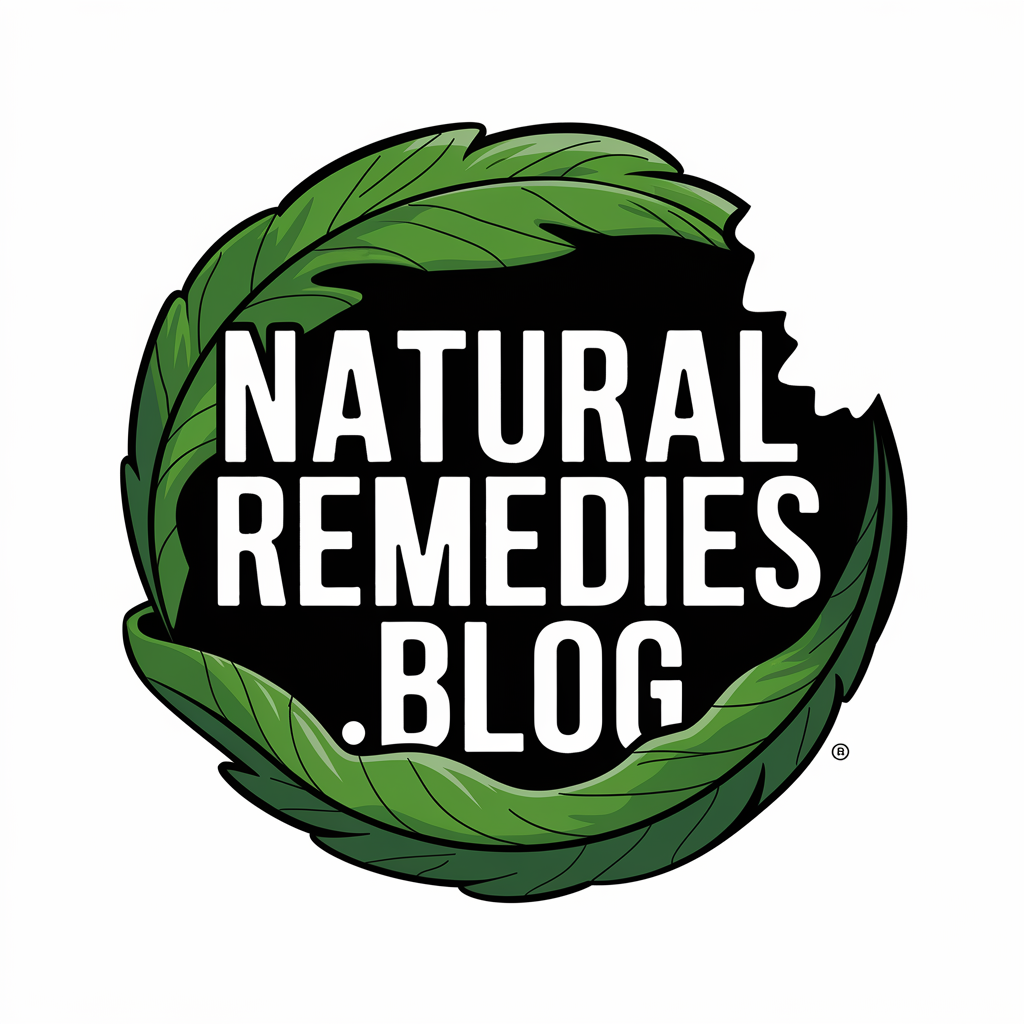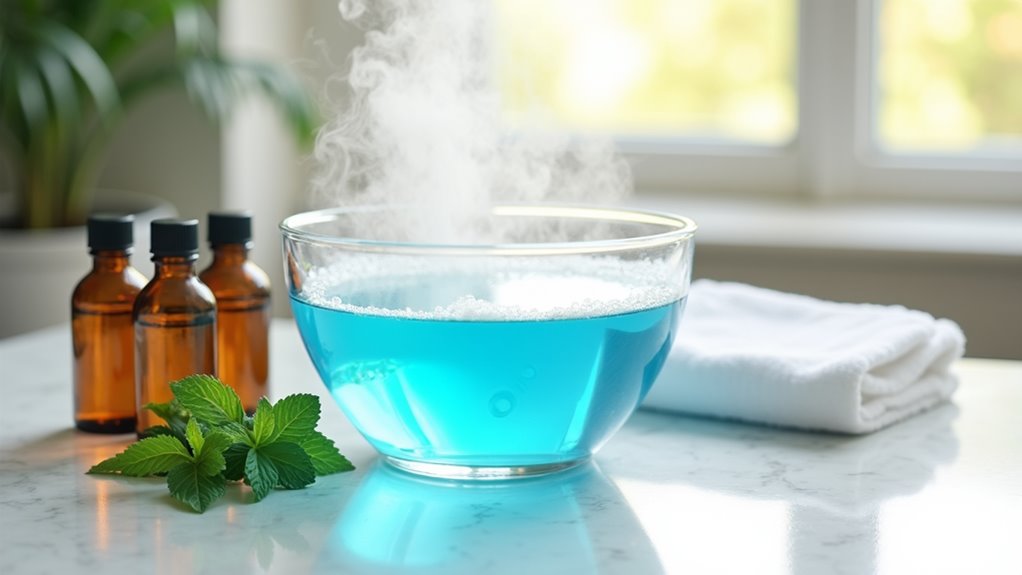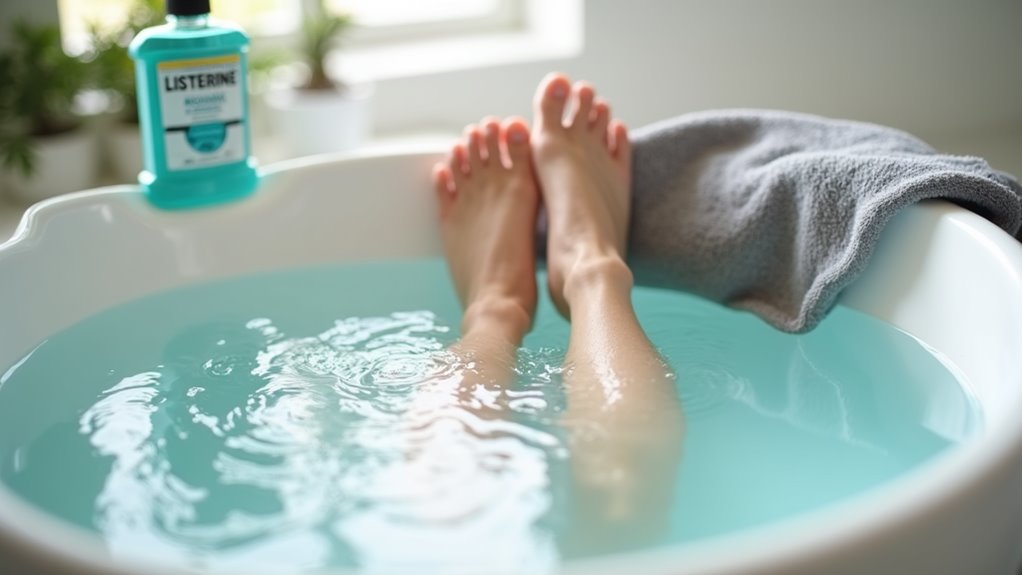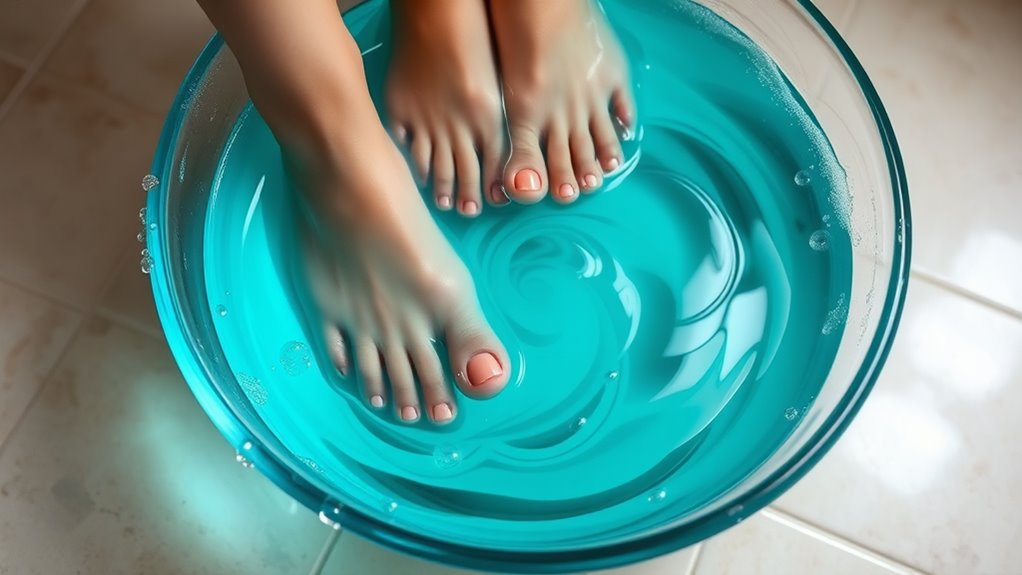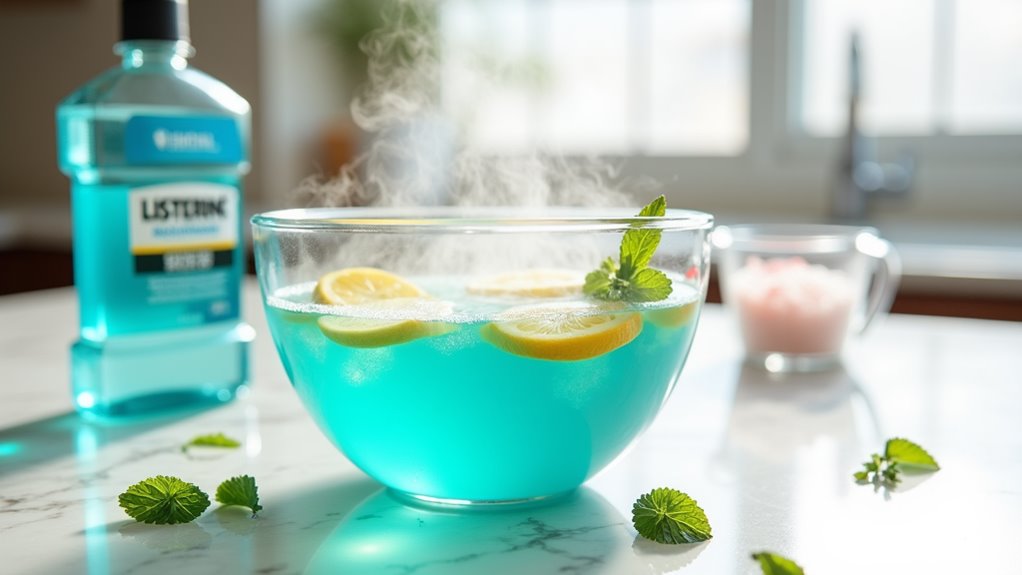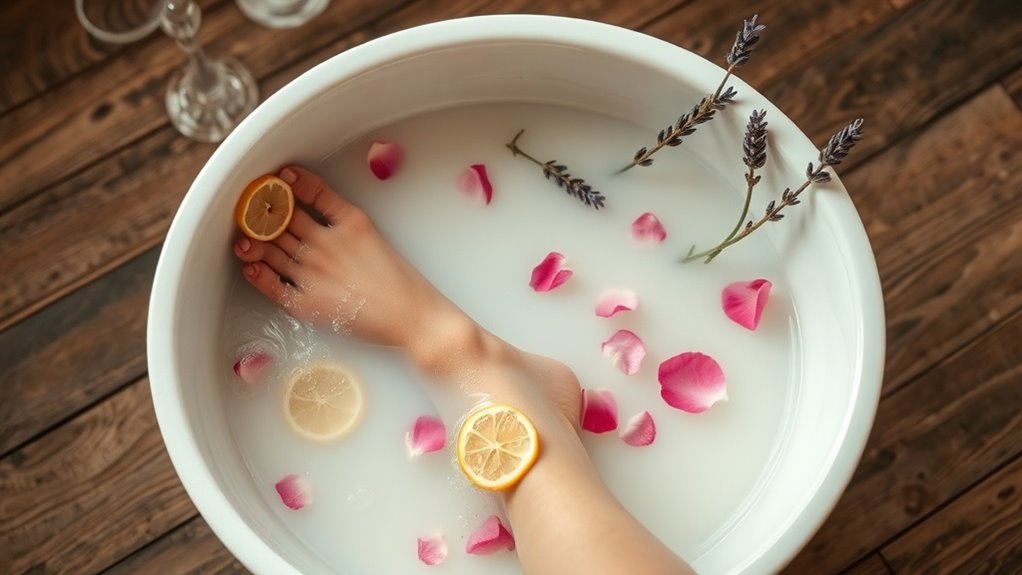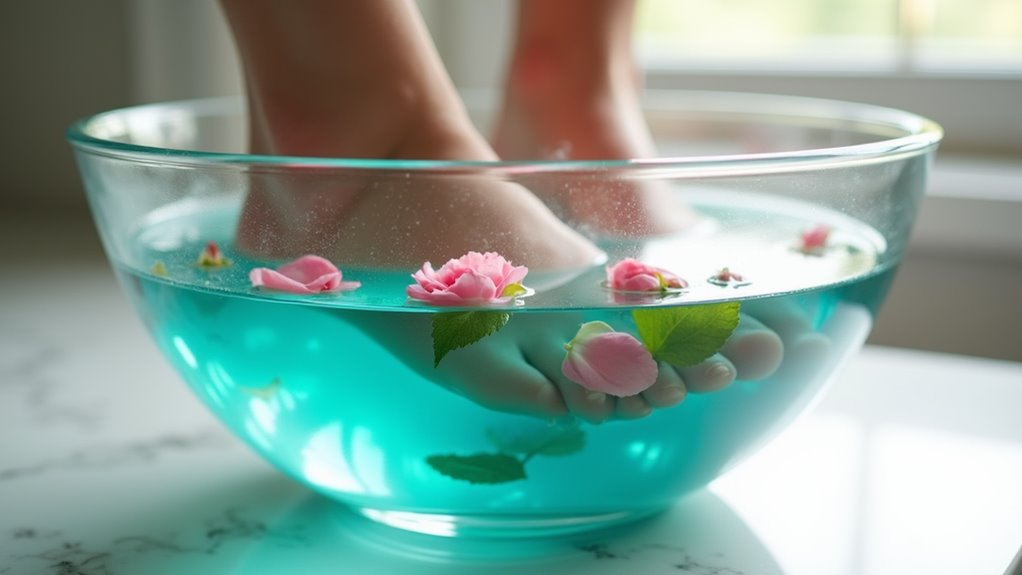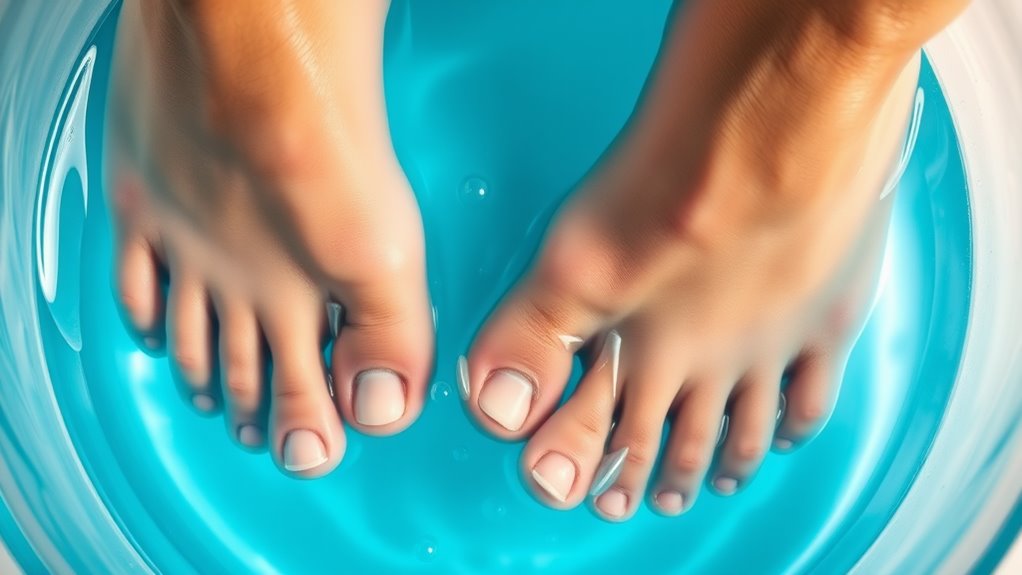Listerine Foot Soak Recipe for Smooth, Odor-Free Feet
To create an effective Listerine foot soak, mix 1 cup of original amber Listerine with 1 gallon of warm water (95-100°F) in a foot basin. For enhanced antimicrobial benefits, add 1 cup of white vinegar. Soak your feet for 45-60 minutes, flexing toes and rotating ankles to maximize penetration. Pat feet completely dry, especially between toes, and apply moisturizer immediately. This antimicrobial treatment’s powerful ingredients – thymol, eucalyptol, menthol, and methyl salicylate – will combat odor and soften calluses when used 2-3 times weekly.
The Science Behind Listerine for Foot Care
The active ingredients in Listerine – thymol, eucalyptol, menthol, and methyl salicylate – provide antimicrobial and antifungal properties that make it effective for foot care.
When you soak your feet in diluted Listerine, these compounds penetrate the skin’s surface to combat bacteria and fungi that cause foot odor and infections.
The antiseptic action of a Listerine foot soak helps eliminate microorganisms while the essential oils soften calluses and reduce inflammation.
The methyl salicylate, similar to aspirin’s active component, provides mild pain relief and decreases swelling.
Meanwhile, menthol creates a cooling sensation that soothes tired feet.
The mixture works best when combined with benzoic acid to effectively soften and reduce dead skin buildup on feet.
Essential Ingredients and Supplies
To create an effective Listerine foot soak, you’ll need a large basin or foot tub, original amber Listerine antiseptic mouthwash, warm water, and a timer. The optimal mixture requires 1 cup of Listerine combined with 1 gallon of warm water at approximately 95-100°F (35-38°C). You’ll also want to have clean towels ready for drying your feet and a comfortable chair positioned near your soaking station. For enhanced therapeutic benefits, consider adding Epsom salt and vinegar to boost antibacterial properties and skin softening effects.
Basic Supplies Needed
Creating an effective Listerine foot soak requires four essential components: antiseptic Listerine mouthwash, white vinegar, warm water, and a basin large enough to submerge both feet comfortably.
You’ll need one cup of original Listerine (blue or amber), one cup of white vinegar, and approximately two cups of warm water.
The basin should be non-metallic and at least six inches deep to ensure proper coverage of your feet to the ankles. A digital timer will help track the recommended 15-minute soaking duration, while a clean towel is necessary for drying your feet post-treatment.
Ingredient Measurements Required
Precise measurements significantly impact the effectiveness of your Listerine foot soak treatment.
You’ll need 1 cup of original Listerine mouthwash (amber-colored), 1 cup of white vinegar, and 2 cups of warm water. Combine these ingredients in a basin large enough to submerge both feet comfortably.
For enhanced therapeutic benefits, you can add 1/2 cup of Epsom salt to the mixture.
Maintain a consistent water temperature between 95-100°F (35-38°C).
If you’re treating severe foot conditions, increase the Listerine ratio to 1.5 cups while keeping other measurements constant.
Don’t dilute the solution further, as this reduces its antimicrobial properties.
Step-by-Step Foot Soak Recipe
This clinical foot soak recipe combines Listerine’s active ingredients with warm water to create an antimicrobial solution targeting foot odor and fungal conditions.
Fill your foot basin with 1 gallon of warm water (95-100°F).
Add 1 cup of original Listerine and 1 cup of white vinegar, stirring to mix thoroughly.
Immerse your feet in the solution for 45-60 minutes.
During treatment, flex your toes and rotate your ankles to enhance circulation and solution penetration.
After soaking, dry your feet completely, especially between toes.
For optimal results, apply this treatment 2-3 times weekly.
The active ingredients like menthol, thymol, and eucalyptol help eliminate bacteria while providing a soothing cooling sensation.
Best Practices for Optimal Results
To maximize therapeutic benefits from your Listerine foot soak, follow several key clinical protocols. You’ll need to maintain proper water temperature, timing, and post-soak care for optimal results.
| Protocol | Duration | Clinical Benefit |
|---|---|---|
| Temperature | 95-100°F | Enhances antiseptic action |
| Soak Time | 15-20 min | Optimizes penetration |
| Frequency | 2-3x/week | Prevents overexposure |
| Aftercare | 5 min | Locks in treatment |
Remember to dry thoroughly between toes, apply moisturizer immediately after patting feet dry, and wear breathable cotton socks. Monitor your skin’s response and adjust frequency based on sensitivity levels. Adding essential oils like tea tree or lavender can enhance the therapeutic effects while providing a calming aroma.
Benefits and Expected Outcomes
Your Listerine foot soak can effectively target three common podiatric concerns for healthier feet.
You’ll notice calluses and dry patches become noticeably softer while persistent bromhidrosis (foot odor) diminishes due to the antiseptic properties of Listerine’s active ingredients.
The solution’s antimicrobial components help combat fungal organisms that commonly affect the feet, supporting natural defense mechanisms against conditions like athlete’s foot and nail fungus.
Regular soaking sessions of 30-45 minutes duration allow the menthol, thymol, and eucalyptol to fully penetrate and break down hardened skin layers.
Softens Rough Skin Areas
Rough, calloused skin on feet responds remarkably well to Listerine foot soaks, primarily due to the solution’s antiseptic properties and benzoic acid content.
You’ll notice the solution gently exfoliates dead skin cells while the antimicrobial agents penetrate deep into calloused areas.
The foot soak’s acidic pH helps break down hardened skin proteins, making tough areas more receptive to moisturizing treatments. Within 15-20 minutes of soaking, your calluses will become noticeably softer and more pliable.
For optimal results, follow your soak by gently filing softened areas with a pumice stone, then applying a urea-based moisturizer to lock in the therapeutic benefits.
Eliminates Persistent Foot Odor
While many over-the-counter remedies target foot odor temporarily, Listerine’s powerful combination of antimicrobial essential oils directly confronts the root cause of bromodosis by eliminating odor-causing bacteria.
You’ll notice a significant reduction in foot odor after your first 15-minute soak, as Listerine’s thymol and eucalyptol components penetrate deeply into the skin’s surface.
These active ingredients disrupt bacterial cell membranes and prevent microbial reproduction, effectively neutralizing the metabolic processes that create unpleasant foot odors.
For optimal results, you’ll want to maintain a regular soaking schedule of 2-3 times weekly, ensuring long-lasting protection against persistent foot odor.
Fights Fungal Growth Naturally
Listerine’s potent combination of essential oils, including thymol and eucalyptol, exhibits significant antifungal properties that can help combat common foot fungal infections like athlete’s foot (tinea pedis).
When you soak your feet in a Listerine solution, these active compounds penetrate the skin’s surface, creating an inhospitable environment for fungal growth.
The antiseptic properties help eliminate existing fungal colonies while preventing new spores from developing. You’ll notice reduced scaling, itching, and discomfort between toes and on the soles – typical symptoms of fungal infections.
Regular soaks can maintain this protective barrier, especially if you’re prone to recurring fungal issues.
Safety Precautions and Considerations
Before attempting any foot soak treatment, you should consult your healthcare provider if you have diabetes, peripheral vascular disease, or open wounds on your feet.
Don’t soak your feet for more than 30 minutes, as prolonged exposure can cause skin irritation.
Test the solution on a small patch of skin first to check for sensitivity. Keep the water temperature below 105°F to prevent burns.
If you experience redness, itching, or discomfort, discontinue use immediately.
Ensure your feet are thoroughly dried after soaking, paying special attention to the areas between toes to prevent moisture-related complications.
Adding benzoic acid properties helps dissolve dead skin cells for softer, smoother feet.
Alternative Ingredients and Variations
While traditional Listerine foot soaks are effective, you can enhance their therapeutic benefits by incorporating essential oils like tea tree, lavender, or eucalyptus for additional antimicrobial and aromatherapy effects.
You’ll find apple cider vinegar or white vinegar serve as excellent alternatives to Listerine, offering similar antifungal and exfoliating properties for your feet.
For a completely natural approach, you can substitute the commercial ingredients with Epsom salt, baking soda, and fresh lemon juice to create an equally effective foot soak that addresses odor and skin concerns.
Adding methyl salicylate to your foot soak mixture provides natural exfoliating properties for smoother, softer feet.
Essential Oil Blend Options
Adding essential oils to your Listerine foot soak can enhance its therapeutic benefits and create a more personalized treatment experience.
When selecting oils, consider their specific properties for foot care and combine them with the antiseptic qualities of Listerine.
-
Tea tree oil (5-7 drops): Provides additional antifungal and antibacterial protection, especially beneficial for athlete’s foot.
-
Lavender oil (3-5 drops): Offers calming aromatherapy while reducing inflammation and promoting skin healing.
-
Peppermint oil (2-4 drops): Creates a cooling sensation while improving circulation and relieving foot fatigue.
Mix your chosen oils into the solution just before soaking your feet.
Vinegar-Based Foot Soaks
Vinegar-based foot soaks offer a potent alternative to Listerine, utilizing the natural antimicrobial properties of acetic acid to combat foot odor and fungal infections.
You’ll need one part apple cider vinegar to two parts warm water. For enhanced therapeutic benefits, add 1/2 cup of Epsom salt, which helps draw out toxins and reduce inflammation.
White vinegar can substitute for apple cider vinegar, though it lacks additional beneficial compounds.
Soak your feet for 15-20 minutes. The acidic pH helps restore your skin’s natural barrier while eliminating bacteria and fungi.
For optimal results, perform this treatment 2-3 times weekly.
Natural Ingredient Substitutions
For those seeking alternatives to Listerine in foot soaks, several natural ingredients can provide comparable therapeutic benefits. These substitutions target similar foot concerns while offering antimicrobial and skin-softening properties.
-
Tea tree oil mixed with warm water creates an antifungal soak that combats athlete’s foot and nail infections.
-
Epsom salt combined with lavender essential oil delivers magnesium absorption while reducing inflammation.
-
Apple cider vinegar diluted in warm water maintains optimal pH balance and eliminates foot odor.
These natural alternatives deliver therapeutic effects without synthetic ingredients, though results may take longer than commercial products.
Maintenance Tips for Long-Lasting Results
Three essential practices will help maintain the therapeutic benefits of your Listerine foot soak routine.
First, establish a consistent weekly schedule, performing the soak 2-3 times to prevent bacterial and fungal recurrence.
Second, always dry your feet thoroughly, especially between toes, as moisture creates an environment for microbial growth.
Third, apply an antifungal foot powder or cream post-soak.
Between treatments, wear moisture-wicking socks, rotate shoes daily to ensure proper drying, and inspect your feet regularly for signs of irritation or infection.
These maintenance steps will maximize the antimicrobial and exfoliating effects of your Listerine foot soaks.
For enhanced antifungal protection, consider adding a few drops of tea tree oil to your foot powder, as its natural terpenes actively combat fungal growth.
Common Foot Problems This Soak Addresses
Listerine foot soaks effectively target multiple podiatric conditions that commonly plague patients. The antiseptic properties of methyl salicylate and thymol in the mouthwash combat persistent fungal and bacterial issues that affect foot health.
-
Onychomycosis (nail fungus) and tinea pedis (athlete’s foot) respond to the antifungal compounds.
-
Bromhidrosis (foot odor) diminishes due to the solution’s antimicrobial action against odor-causing bacteria.
-
Hyperkeratosis (calluses) and xerosis (dry skin) improve through the soak’s keratolytic effects.
These therapeutic benefits make Listerine soaks an accessible option for maintaining optimal pedal hygiene and addressing common dermatological concerns.
When to Seek Professional Care
While Listerine foot soaks can provide relief for minor foot ailments, certain symptoms warrant immediate professional evaluation.
Seek medical attention if you notice signs of infection, including severe redness, swelling, warmth, or pus drainage.
Don’t delay care for deep cracks that bleed, persistent fungal infections that worsen, or diabetic foot ulcers.
Contact a podiatrist immediately if you experience intense foot pain, numbness, or tingling that doesn’t resolve.
If you have diabetes, peripheral vascular disease, or compromised immunity, consult your healthcare provider before starting any foot soak routine, as these conditions require specialized foot care protocols.
